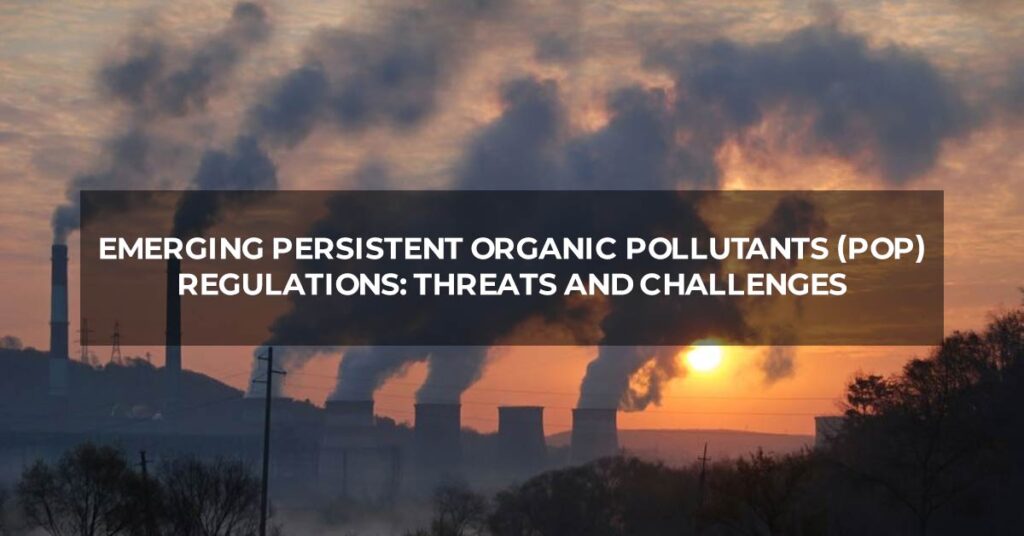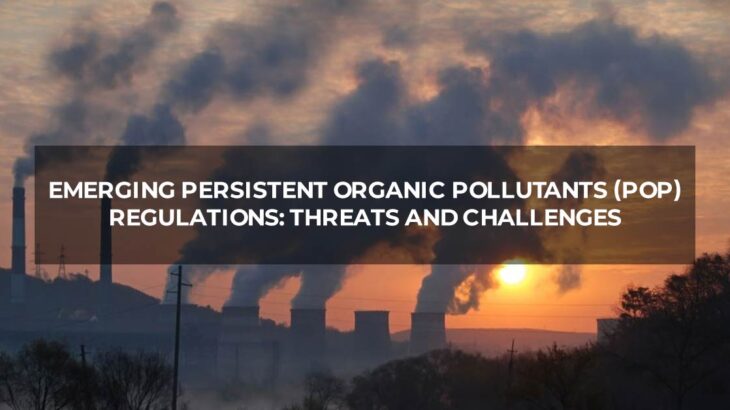
It is well known that persistent organic pollutants, or POPs, pose serious risks to both the environment and human health. However, new POPs are constantly appearing as industrial processes and science progress, creating new hurdles for environmental protection efforts. It is essential to comprehend these newly discovered POPs and deal with the problems they present in order to protect ecological integrity and public health.
While the manufacturing and use of many conventional POPs, including polychlorinated biphenyls (PCBs), have been controlled, there are novel POPs that present fresh risks and difficulties. Among these newly popular POPs are:
Per-and Polyfluoroalkyl Substances (PFAS):
PFAS are synthetic compounds found in a variety of consumer and commercial goods, including water-repellent textiles, non-stick cookware, and firefighting foams. These substances have been found in water, soil, air, and animals all around the world. They are extremely persistent in the environment. Exposure to PFAS has been connected to a number of harmful health outcomes, such as cancer, immune system malfunction, and developmental problems.
Organophosphate Esters (OPEs):
Flame retardants used in plastics, textiles, and electrical equipment are called organophosphate esters, or OPEs. These substances have been found in dust, aquatic habitats, and interior surroundings. OPEs have been linked to effects on human and wildlife reproduction, neurotoxicity, and endocrine disruption.
Novel Brominated Flame Retardants (NBFRs):
Because of their toxicity and durability, conventional brominated flame retardants have been phased out. NBFRs are an alternative. However, several NBFRs have been found in environmental samples and are concerning because of their possible health consequences and environmental durability. Examples of these are 2-ethylhexyl 2,3,4,5-tetrabromobenzoate (TBB) and 1,2-bis(2,4,6-tribromophenoxy)ethane (BTBPE).
Pharmaceuticals and Personal Care Products (PPCPs):
PPCPs include a broad category of chemicals used in common consumer goods, such as hormones, pharmaceuticals, and personal care items. These substances have the potential to contaminate water bodies and have an adverse effect on the environment through agricultural runoff and wastewater effluent. Concern over PPCPs’ potential to function as endocrine disruptors and contribute to antibiotic resistance is growing, even though the long-term impacts on human health and the environment are still being investigated.
The fact that developing POPs are widely used in consumer goods and industrial processes is one of the main problems they present. These substances may have similar toxicological characteristics and environmental persistence because they were frequently created as alternatives to POPs that were previously restricted. These newly discovered POPs have the potential to harm ecosystems and human health since they can bioaccumulate in organisms and build up in the environment despite little regulatory supervision.
Furthermore, it is more difficult to properly monitor and control developing POPs due to the global nature of trade and business. Although many of these chemicals are produced and utilized in one area of the world, they have the ability to spread far and contaminate far-flung areas due to air and water currents. In order to address the transboundary movement of new POPs and reduce their effects on the environment and human health, regulatory frameworks and monitoring programs including international collaboration and coordination are needed.
The lack of knowledge regarding the long-term impacts of developing POPs on the environment and human health is another difficulty in managing them. Emerging POPs might not have as much thorough toxicological data and exposure information as well-researched legacy POPs, which have been the focus of in-depth studies and risk assessments. This information gap makes it more difficult to appropriately evaluate the hazards these chemicals cause and to put in place efficient risk management strategies.
Moreover, keeping ahead of the curve in recognizing and controlling developing POPs is made more difficult by the quick speed of industrial development and technological innovation. It is difficult for regulatory bodies to stay up to date with the latest developments in environmental risks since new chemicals and goods are constantly coming into the market. To stop the spread of potentially dangerous compounds and encourage the creation of safer substitutes, proactive strategies are required. Examples of these strategies include sustainable product design and the use of green chemistry concepts.
In summary, emerging Persistent Organic Pollutants (POPs) pose serious risks to public health and the environment, necessitating quick thinking and coordinated response from decision-makers, researchers, business partners, and civil society. We can lessen the effects of new POPs on the environment and human health and work toward a more resilient and sustainable future by identifying the difficulties they present and taking proactive measures to overcome them.
Sunstream provides consulting, services and technology solutions to manage your product environmental compliance. We have comprehensive offerings for regulations like Conflict mineral compliance, RoHS compliance and REACH compliance.




 +1.585.935.7123
+1.585.935.7123 +91-804-148-6861
+91-804-148-6861